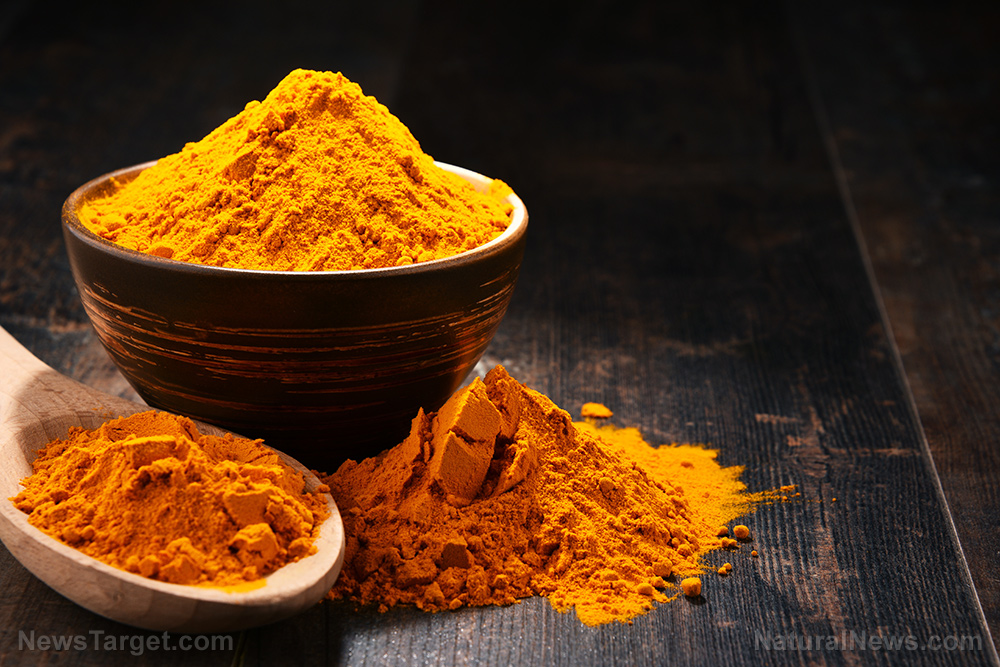 Parler
Parler Gab
Gab
"[T]he remarkable improvement achieved for all outcome measures after one year of uninterrupted GFD [gluten free diet] in 7 CD [celiac disease] females previously categorized as severe IBS/FMS patients recruited through case-finding among IBS and FMS patients."The researchers pointed out that fibromyalgia syndrome (FMS) is a condition whose causes remain enigmatic, with no currently available imaging technologies or analytical tests available for an objective diagnosis. All the more reason why their findings hold great promise in the treatment of FMS patients through gluten removal, and perhaps the identification of the condition as one of hundreds of possible extra-intestinal manifestations of celiac or non-celiac gluten sensitivity. They summarize:
"The striking results of the present trial suggest that a triggering gluten-related autoimmune inflammatory process within the gastrointestinal tract may end up contributing to the onset or increasing the well-documented central nervous system sensitivity responsible for FMS disorder in some CD- or gluten-sensitive individuals [30]. This hypothesis appears to be consistent with the increased prevalence of FMS described in women with different chronic inflammatory processes within the gastrointestinal tract [31,32], and with the fact that our patients reported a long-term history of gastrointestinal complaints preceding the onset of generalized FMS symptoms by decades. Specifically, the comorbid triad of IBS, chronic fatigue and musculoskeletal pain has been considered striking, and other authors have suggested that it may point to an underlying common food hypersensitivity-related mechanism [15]."Additional Evidence-Based Natural Interventions For Fibromyalgia Fibromyalgia research has expanded significantly over the past two decades, with many natural interventions now gaining attention and increasingly, clinical validation. These include:
- Magnesium: It has been known since at least 1994 that fibromyalgia patients have lower levels of magnesium in their red blood cells than normal subjects.[ii] [iii] Additionally, a 2008 study found that fibromyalgia patients have an association between fatigue and serum magnesium levels.[iv] As far back as 1995, researchers confirmed in double-blind, randomized, placebo-controlled study that a combination of malic acid (200 mg) and magnesium (50 mg) is an effective treatment for patients with primary fibromyalgia.[v] A 1999 study found that fibromyalgia patients had higher levels of calcium and magnesium levels in their hair, and that supplementation with these minerals reduced the number of tender points, indicating their potential therapeutic role in treatment.[vi]
- Vitamin D: Deficiency of vitamin D is common in fibromyalgia patients and occurs more frequently in patients with anxiety and depression.[vii] A 2009 study found that vitamin D treatment in fibromyalgia patients resulted in mild short-term improvement in the overall fibromyalgia impact score.[viii] A more recent 2014 study found that the optimization of vitamin D levels in fibromyalgia patients had a positive effect on the perception of pain.[ix]
- Cellfood: A 2007 single-blind, cross-over, randomized placebo-controlled trial involving 320 subjects found that a supplement known as Cellfood (deutrosulfazyme), believed to increase oxygen levels while simultaneously reducing oxidative stress in the body, improved symptoms of fibromyalgia and quality of life.[x]
- Coenzyme Q10: A 2007 study found that levels of the antioxidant and mitochondrial cofactor coenzyme Q10 are about 40% lower in fibromyalgia patients versus healthy controls, indicating a possible therapeutic role in its use to address this deficiency.[xi]
- D-Ribose: A 1985 study found that D-ribose significantly reduced clinical symptoms in 66% of patients suffering from fibromyalgia and chronic fatigue syndrome.[xii]
- Vitamin C and Broccoli: A 2000 study found that a combination of a food-derived vitamin C (100 mg) and broccoli (400 mg) supplement resulted in a 20.1% decrease in pain and a 17.8% decrease in fibromyalgia impact scores.[xiii]
- Breast Implants: In a previous article titled, "Implanted: The Myth of the Cancer-Free Breast Implant," we touched upon the clearly defined link between autoimmune disease and breast implants.[xiv] Indeed, fibromyalgia and chronic pain has been discussed as a possible adverse consequence of them.[xv] [xvi]
- Statin Drugs: Linked to over 300 adverse health effects in the biomedical literature, this class of chemical, cholesterol-lowering drugs can devastate human health. Muscle pain and damage, of course, is one of the most well-known side effects of statin drugs. It is no surprise, therefore, that research points to their link with fibromyalgia as well.[xvii]
- Aspartame and MSG: A 2001 case study established the therapeutic value of removing aspartame and MSG from the diets of fibromyalgia patients.[xviii] MSG and dietary glutamate were shown again in 2012 to be particularly problematic for fibromyalgia patients.[xix]
- Vaccine Adjuvants: It has been hypothesized that the use of aluminum-based adjuvants such as aluminum hydroxide in vaccines to stimulate the TH2 pole of immunity may result in musculoskeletal pain consistent with conditions such as fibromyalgia.[xx]
- Mindfulness Training: A 2007 study found that mindfulness training improved depression in fibromyalgia patients, [xxi] as did a similar 2009 study.[xxii] A 2009 study found it reduced their psychological distress.[xxiii]
- Yoga: A 2007 study found that yoga practice has therapeutic effects in fibromyalgia patients, [xxiv] as did a similar 2010 study which resulted in improvement in "standardized measures of FM symptoms and functioning, including pain, fatigue, and mood, and in pain catastrophizing, acceptance, and other coping strategies."[xxv] A 2011 study found an eight-week yoga intervention resulted in improvement in pain, psychological functioning and mindfulness, and changes in cortisol levels in women with fibromyalgia.[xxvi]
- Guided Imagery: A 2006 study found that guided-imagery improved functional status and sense of self-efficacy for managing pain and other symptoms of fibromyalgia.[xxvii] A 2008 study showed relaxation in combination with guided-imagery improved the condition of fibromyalgia patients.[xxviii]
Lithium: The element that can protect people from brainwashing by global elites
By Belle Carter // Share
Turmeric extract kills highly lethal pancreatic tumors, preclinical study reveals
By zikatruth // Share
Governments continue to obscure COVID-19 vaccine data amid rising concerns over excess deaths
By patricklewis // Share
Tech giant Microsoft backs EXTINCTION with its support of carbon capture programs
By ramontomeydw // Share
Germany to resume arms exports to Israel despite repeated ceasefire violations
By isabelle // Share










